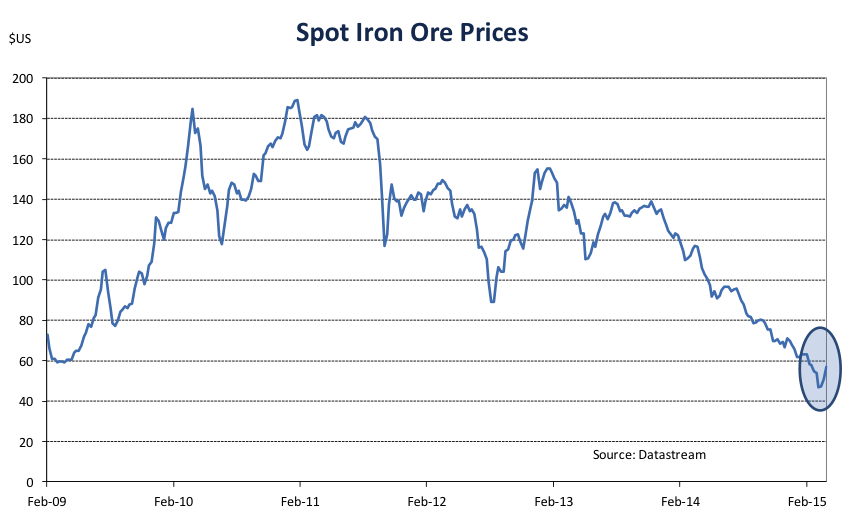Despite Reserve Bank Governor Glenn Stevens’ concerns about Sydney property prices, chances are the RBA will finally deliver the second official interest rate cut for the year on Tuesday afternoon.
While there’s no denying that the Sydney property market continue to run hot, the far more important factor is the significant further slump in iron ore prices in recent weeks. While iron ore prices have enjoyed a bounce over recent days, it’s hard to believe this is anything other than a short term corrective move – particular given the underlying drivers of supply and demand in the market. Chinese industrial indicators remain soft, while the supply of iron ore – in both Australia and China itself – is showing few signs of being wound back anytime soon.

The slump in commodity prices suggest the downturn in mining investment is only likely to deepen, and the Federal Government’s budget accounts will be deeply in the red when the next Budget is handed down in a fortnights time. As we saw last year, the upcoming ugly Federal Budget is likely to provide little in the way of additional stimulus to the economy, and the sea of red ink could again undermine business and consumer confidence.
Meanwhile, reading between the lines, it appears the anecdotes the RBA is getting from the non-mining sector on its investment outlook aren’t too flash. In the minutes of the RBA’s April policy meeting, it was mentioned that “forward-looking indicators (such as the ABS capital expenditure survey and non-residential building approvals) as well as liaison suggested that it [non-mining investment] was likely to remain subdued, and could even decline, over the next year or so.”
That’s a bit more negative than the view of the RBA in the February Statement of Monetary Policy, where the RBA growth outlook still counted on a expected “recovery” in non-mining investment “later in 2015”.
All that suggests that the RBA’s growth outlook – particularly robust growth of around 3.5% in 2016 – will need to be revised down. If so, as in February, a weaker set of growth forecasts in next Friday’s May Statement on Monetary Policy Update could provide the rationale for lowering rates a few days earlier on the Tuesday.
Whether lower rates can do much to directly help the economy remains to be seen. The Sydney housing market certainly does not need much help, but market conditions in states such as South Australian, Tasmania and even Perth are far from robust. The RBA is probably hoping that at least the act of lowering could at least have a positive self-reinforcing “expectations” effect, if everyone starts to feel a little bit more confident about the economy.
Most importantly, however, lowering rates again will reduce the risk of the Australian dollar remaining uncomfortably high – especially if the US Federal Reserve continues to dither or when it will start raising its own level of interest rates from still near-zero levels. The worry for the RBA is that if it gives the market the perception it will not cut rates further, the $A could sail higher due the still attractive yield carry if offers yield starved investors across the globe. The $A’s break above US80c recently would have sent shudders though RBA headquarters.
Should the RBA move on Tuesday, we would be inching close to my view that the cash rate will end the year at 1.5%. Whether the RBA moves or not this month, my view will not change – as I can’t see much prospect of an upturn in the economy anytime soon.







